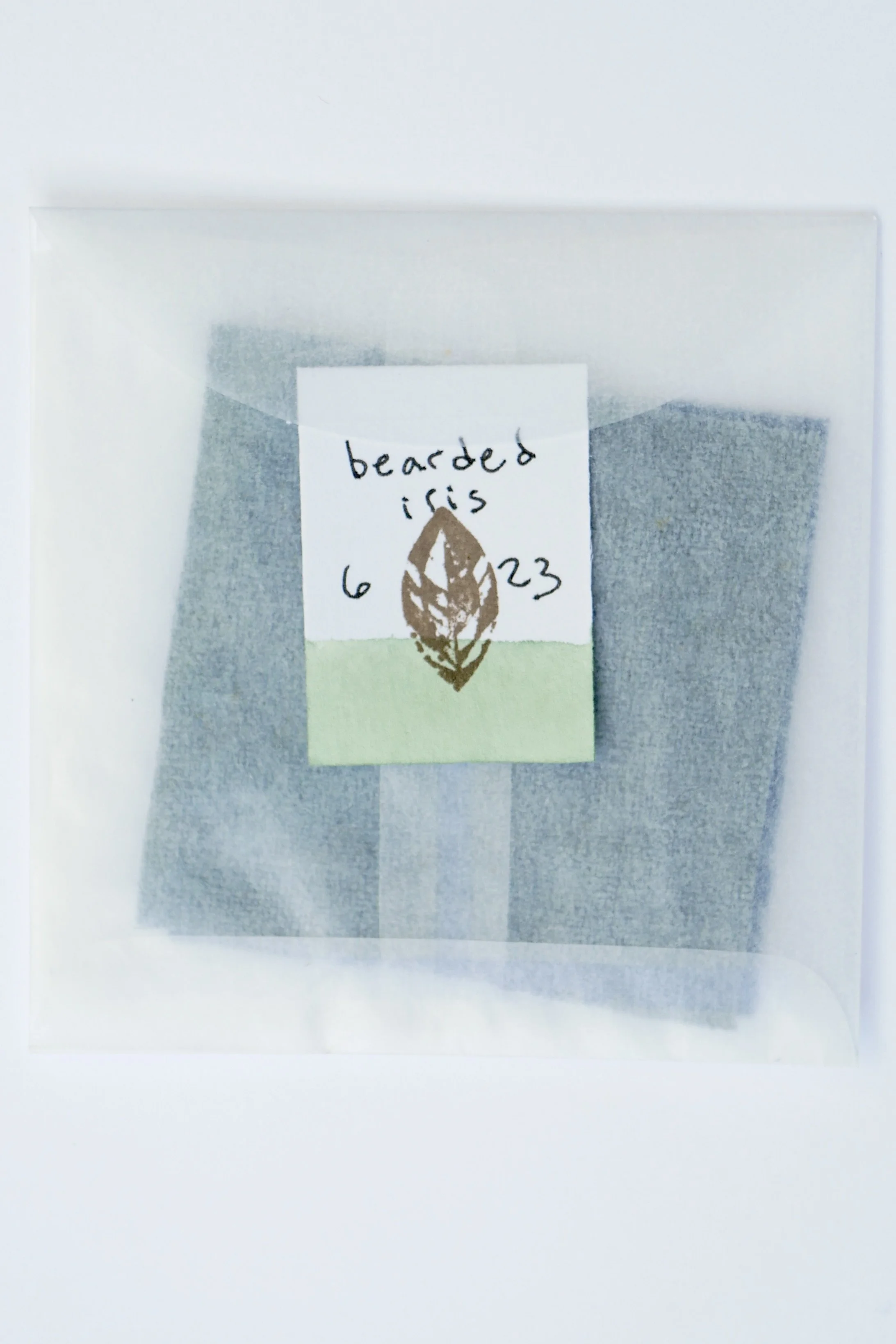bearded iris : june ’23
The two blue squares of cloth that make up this month’s pigment are called “ink clothlets.” Clothlets are an ingenious way to carry ink in your pocket, in dried form, and were used by medieval European manuscript illuminators to store colors used as transparent stains, which were immensely popular at one time. Mixed with a small quantity of a mineral powder called alum, presoaked in the clothlets, the iris ink, which is originally purple, turns blue. Artist and Wild Pigment Project founding director Tilke Elkins has dreamed of offering an iris clothlet contribution since Ground Bright began in 2019. Tilke gathered the iris flower heads for this contribution over a two year period — picking hundreds of flower heads in a number of generous neighbours’ gardens and freezing them. Happily, bearded irises produce a flower nearly every day from a collection of buds on their stalks. Each one of these clothlets holds about three or four flowers’ worth of pure petal liquid essence, dipped and dried three times in the ink.
contributor: Tilke Elkins
Tilke Elkins is an artist, writer, and curator based on Kalapuya territory / Oregon, focused on site-specific/responsive painting and social practice art. Tilke has worked with mineral and botanical pigments since 2007, and is the founding director of Wild Pigment Project, a collaborative initiative she established in 2019 to promote ecological balance and regenerative economies through a passion for wild pigments, their places of origin, and their cultural histories. In 2022, her work was exhibited at form & concept gallery in Ogapogeh Owinge (colonially known as Santa Fe, NM) along with a Wild Pigment Project group exhibition she curated. In summer 2023, a version of the group show will be exhibited at the NMSU Museum in Las Cruces, NM. Her work will also be on view at Feeding the Unseen: Remediations of Earth, a group exhibit curated by Heidi Gustafson and Devon Deimler at the Philosophical Research Institute in L.A. Ground Bright is featured in this summer’s issue of American Craft Magazine. www.tilkeelkins.com
Image courtesy of Noel Guetti.
22% donation recipient : Komemma Cultural Protection Association
Komemma Cultural Protection Association preserves the culture, history and traditions of the Kalapuya people of Western Oregon. They promote Kalapuya culture and engage Native youth while dismantling the entrenched anti-Indigenous infrastructure in Douglas County, Oregon. Komemma Kalapuya elder, Esther Stutzman, founder of the organization, recently worked closely with Paul Stephen Mc Carney, Sr. (1940-2021) and several other Komemma Kalapuya families to produce the Kalapuya Dictionary, a four-volume set. This donation is a contribution to the Cha Tumenma Land Project, led by Esther Stutzman and her descendants in the southern Willamette Valley. They are in the midst of a land rematriation project on over 200 acres in their traditional territory, where they plan to solidify a permanent space for Native youth summer camps, create a community garden, practice cultural fire and on-site sustainable forestry, and more. www.mrgfoundation.org/grantees/komemma-cultural-protection-association/




